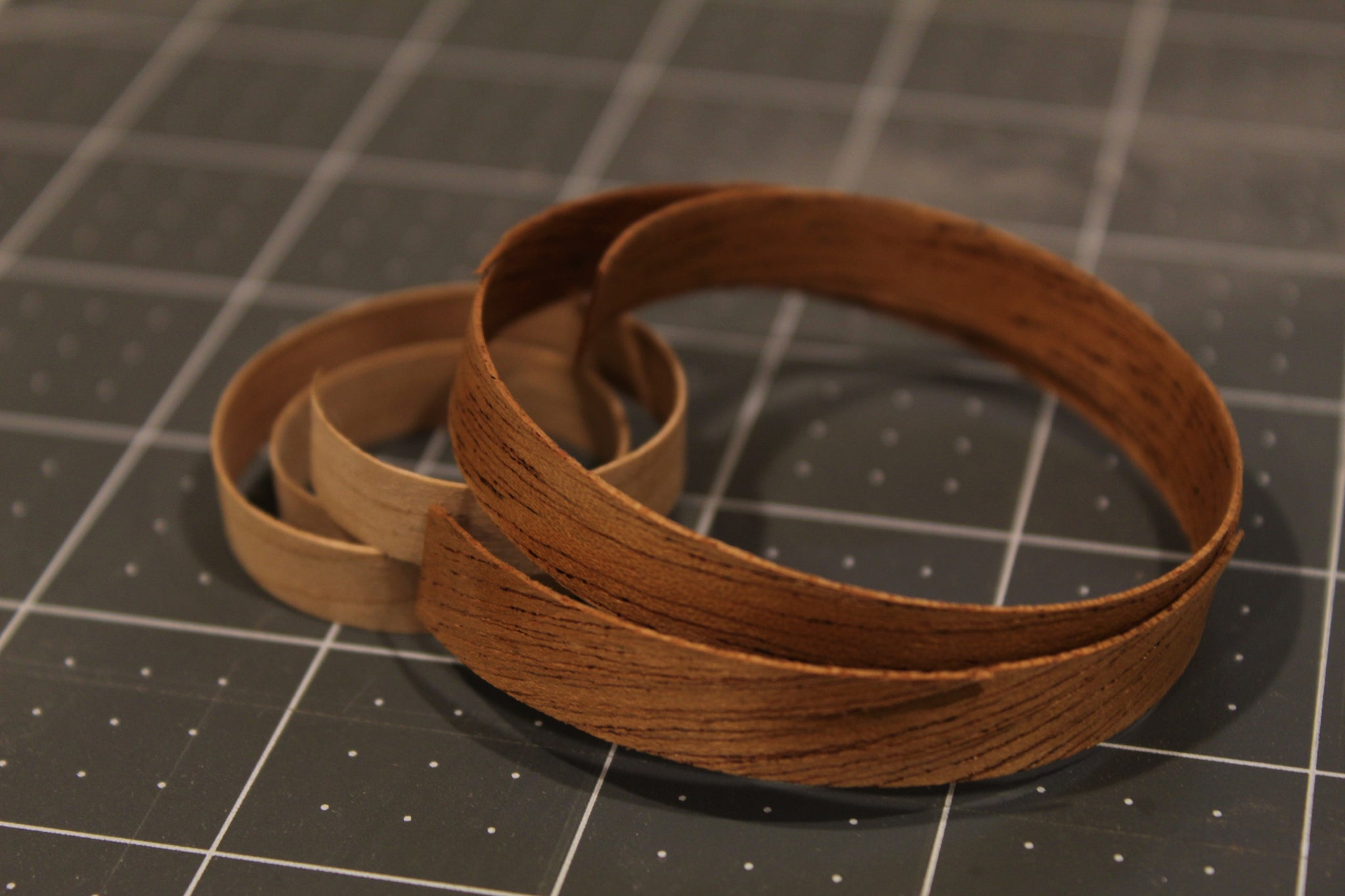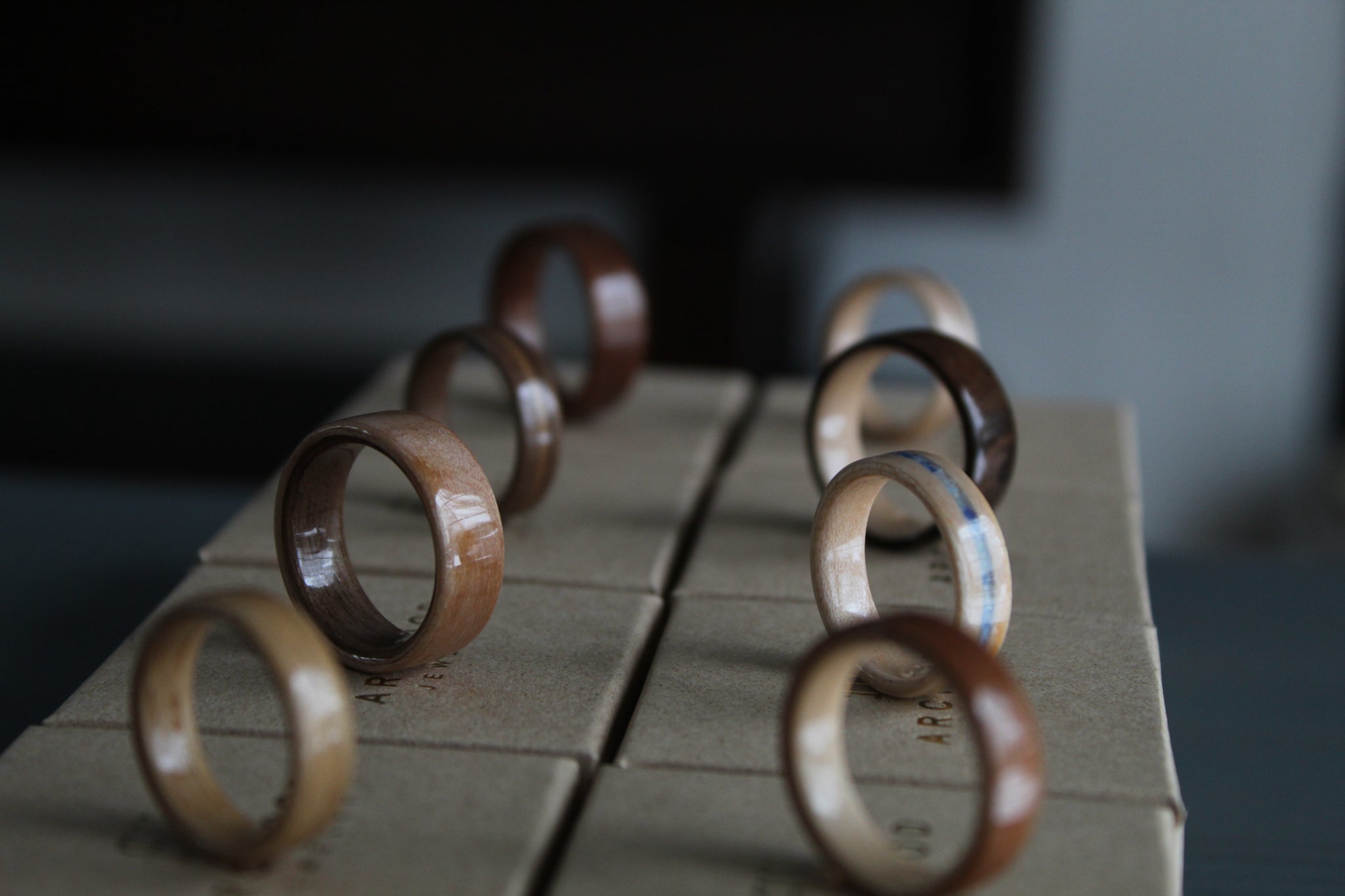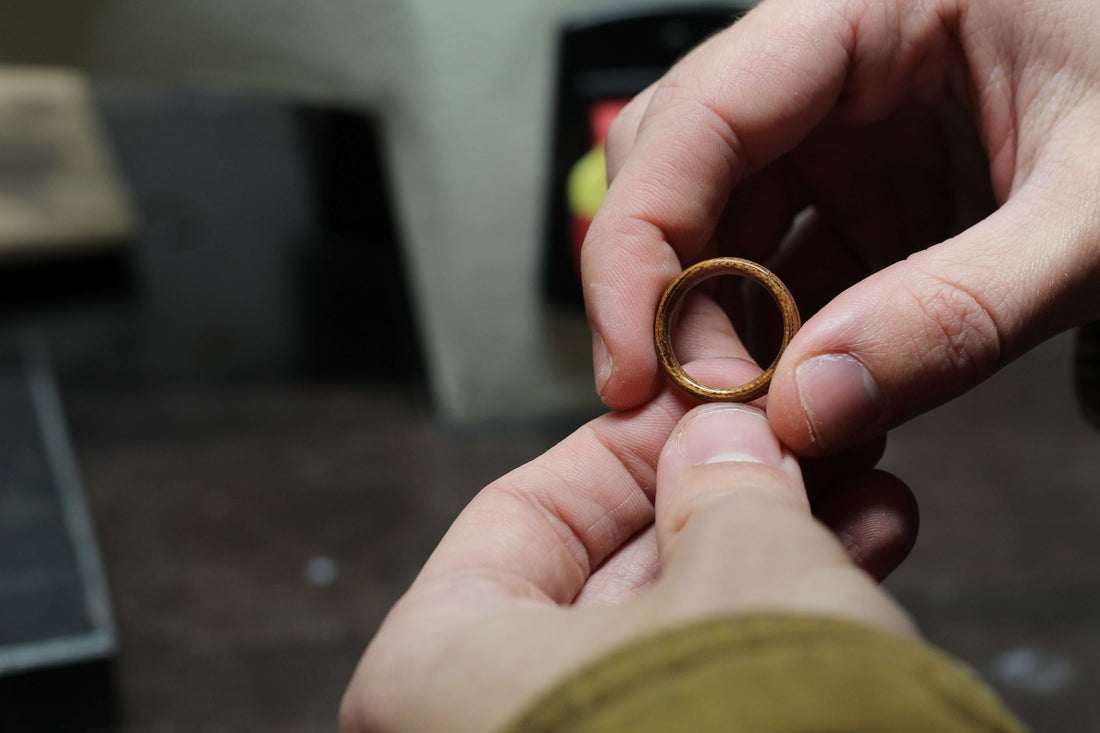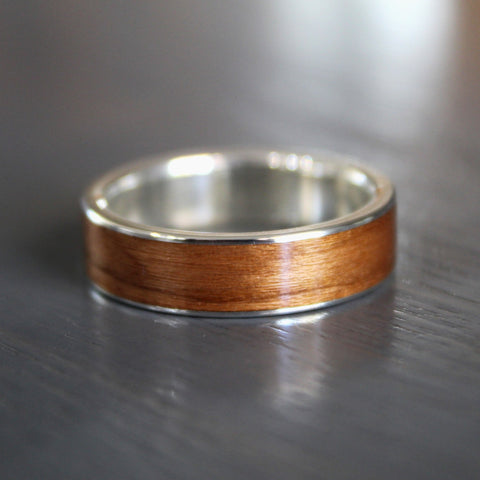The short answer is absolutely. However, not all wood rings are built the same. The durability of a wooden ring is impacted significantly by the following factors. You should keep these points in mind when shopping for your ring.
1. Wood choice
Woods are broadly categorized as hardwoods and softwoods. Due to, well, their hardness and hence durability, hardwoods are the more popular choice for wooden rings. Wood hardness is measured on a ranking system known as the Janka Scale. Maple and oak are great options, ranking quite high (above 1000) on the Janka hardness scale. Softwoods, such as spruce or pine rank relatively low on the Janka scale (around 500), and hence not as durable. Interestingly, although the wood category is important, the majority of the strength of a ring comes from other factors. Keep reading to understand why.
2. Structure
You may have heard the term bentwood when researching wooden rings. The bentwood technique is a method of crafting wooden rings by wrapping a thin veneer, or layer, of wood multiple times around a cylindrical form.

Strips of coiled veneer before the forming process.
These layers are then bonded together into a very durable lamination. Solid rings are prone to cracking or breaking, because at points along the circumference, the wood grains will cut through the entire width of the ring; these weak points are the unavoidable consequence of solid wood. Such weak points are completely eliminated by the bentwood lamination technique, resulting in a very durable and stable piece. Speaking of stable, read on to learn about another important contribution to your ring's long life.
3. Stabilization
Building on the very strong foundation produced by the bentwood method, stabilization, is another crucial step on the path to a long-lasting ring. Stabilization, perhaps a lesser known and utilized technique, requires specialized equipment. In this process, the ring is submerged in a solvent-free, stabilizing compound inside of a vacuum chamber. As the chamber is evacuated, the stabilizing compound penetrates the wood layers and replaces all the tiny pockets of air that are otherwise trapped in the ring. Stabilization produces a ring highly resistant to moisture and much less prone to wear and tear.

The pores in this piece of walnut are very visible in the center.
Fully replacing air pockets with a stabilization compound typically takes a few days to complete. However, at Arcwood Jewelry, we extend the stabilization process to an entire week to ensure the longevity of each ring.
4. Finish
The finish we use takes a trained craftsman to get right, but is ultimately one of the most durable finishes available
The last and critical step crafting the final ring product is finishing. Finishing compounds vary from oils or waxes to UV resins, and everything in between. Finishes are the first line of defense against the elements of wear and tear. Our research and testing has led us to what we feel is the optimal finishing compound: CA or Cyanoacrylate. In our experience, other finishes have proven much inferior to CA; your last concern should be worrying about replacing your ring after just weeks or months of wear.
Raise your confidence that you’ve found your perfect ring by understanding the processes used to craft it. When applied by the hands of an experienced and expert craftsman, the techniques outlined above will result in a ring you’ll enjoy and take pride in for many years to come.

At Arcwood Jewelry, our craftsman has established a consistent and dependable process to create rings of exceptional style, durability, and sustainability. Feel free to reach out to us with any questions on these processes or any other ring related topic!


